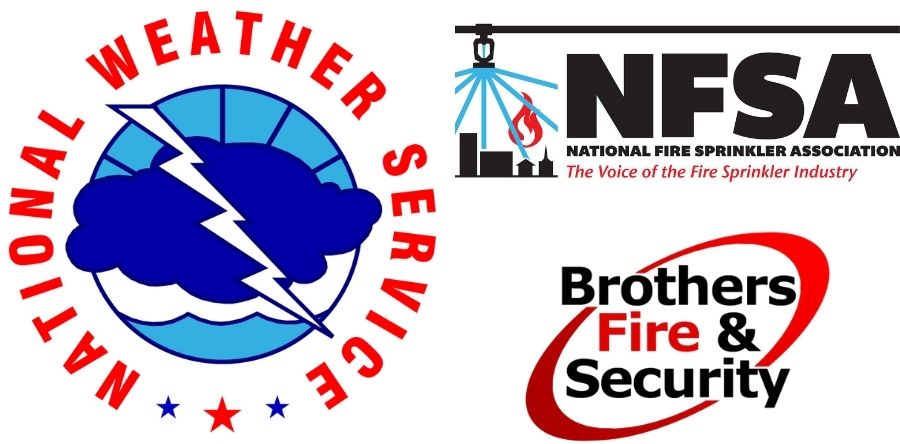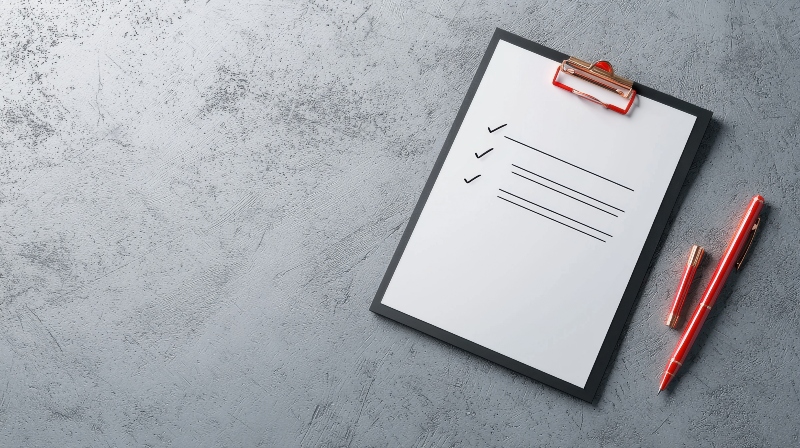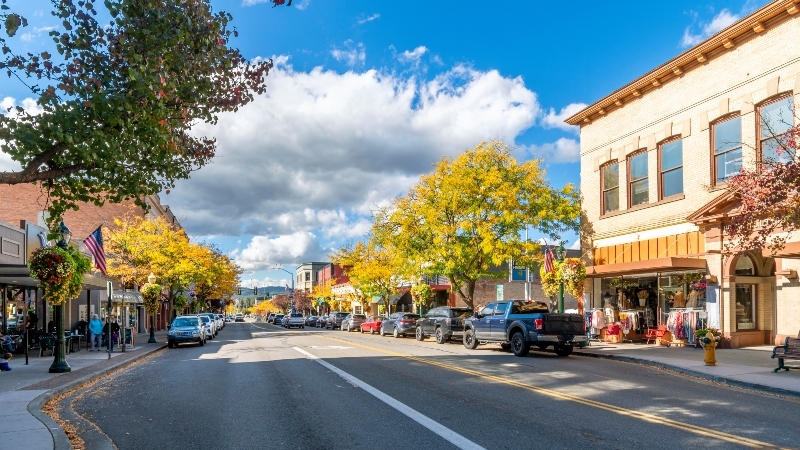Making the Switch: Vendor Transition Guide
Switching fire and security vendors feels risky. Even if your current provider isn't meeting your needs, the thought of transitioning systems and...
 |
Fire protection professionals committed to safeguarding lives, property, and peace of mind. |
 |
Solutions designed for your property type, from multi-family housing to healthcare facilities to retail spaces. |

|
Fire alarm, area of refuge, camera, and card access monitoring services. |
 |
Clear communication and instant response when every second counts. |
 |
From kitchens to server rooms, the right protection for every space. |
 |
Keep your primary defense system ready and reliable. |

|
Manage all your properties' access from one simple platform. |
 |
Monitor multiple properties in real time from anywhere, at any time. |

|
Document upcoming maintenance appointments and improve your proactive budget planning. |
 |
Fire Extinguisher Maintenance Checklist Learn the requirements for testing extinguishers monthly, annually, and beyond. |

|
Track all your inspection deadlines in one place. |
 |
Kitchen Hood Inspection Checklist Ensure your kitchen hoods are safe and compliant. Download a complete list of testing requirements. |

|
Guide to Fire & Security Monitoring Your complete property protection handbook in practical terms. |

|
Running a food truck takes work—this guide gives you the tools to keep it safe and up to code. |
 |
Comprehensive Guide to NFPA 13 and NFPA 25 Fire Sprinkler Systems Navigate sprinkler system requirements with confidence using our straightforward guide to codes and maintenance. |

|
Get your essential compliance guide. |
 |
When reliability matters across 18 restaurants, micromanagement doesn't. |
4 min read
Stephen Cieslukowski, President : March 01, 2021

Mother Nature has been on a path of destruction this winter from Texas to the Midwest to the Carolinas. Weather patterns turned downright brutal in February. Relentless snow and ice storms, severely colder than normal temps, below-zero temps, and tornadoes overwhelmed millions of people and caused billions of dollars in damage.
The wrath of the 2021 Big Chill unleashed in Texas was documented in broadcast and social media. Who can forget images of snapped power lines covered in thick ice, impassable interstates, ice hanging from faucets and snow on a Galveston Beach?
Among the property casualties were sprinkler systems and frozen pipes. In one case, a sprinkler system at an Austin, Texas school froze and exploded at the entrance of the building. Frigid waters cascaded into the administrative offices and down the main hallway. Water seeped into the carpets and in between the tiled flooring..
So why did some sprinklers systems fail in the Big Chill? To explain why, I’m partnering with the National Fire Sprinkler Association (NFSA) for this blog. Brothers Fire & Security has been a member of this organization for over 20 years.
NFSA’s mission is to protect lives and property from fire through the wide-spread acceptance of the fire sprinkler concept. The organization works closely with state and local lawmakers to pass legislation to make homes and businesses safer. NFSA collaborates with the Home Fire Sprinkler Coalition and several other grassroots organizations. Its diverse team of fire officials, contractors, engineers, attorneys, and tradespeople pulls from a vast variety of skills and experiences. With such credentials and expertise, NFSA is the “go-to” resource as we explore what happened with the Big Chill and what we can do when it happens again—or better yet, prevent it.
Location of the frost line contributed to the damage at the school in Texas, and thousands of homes and businesses in Texas and other southern states, the frost line https://www.hammerpedia.com/frost-line-map is the depth at which the ground freezes and is determined by National Weather Service. Frost lines differ throughout the country. Here in Minnesota, the line ranges from 70 inches along Interstate 90 to 100 inches in Lake of the Woods. In contrast, the line in Texas is 5-20 inches.
When cold weather changes water from liquid to solid, it expands 9% in volume. Because of this, it’s important that the footings for a building or a deck be placed below the frost line so the posts don’t shift as the ground freezes and thaws. Water and sewer pipe also need to buried below the frost depth. As the frost line goes deeper, frost heave can be detrimental to footings, foundations, pipes and sewers. Which is exactly what happened in Texas last month.
Given the February Deep Freeze and extreme weather patterns throughout the country, the current frost lines for Texas and other southern states may not be deep enough anymore. It’s time to reevaluate the frost line requirements and building codes. While one event may or may not justify this, frost depths for mains are established by NFPA 13 and NFPA 24. These installation standards require fire service mains to be another 12 in. deeper than the published frost depths.
Building codes are evaluated and adopted by the International Building Code (IBC) and International Code Council (ICC). The ICC writes and publishes codes, such as the IBC. State and local jurisdictions evaluate and adopt. For example MN adopts the IBC and enforces it. The IBC relies on data from the National Weather Service. Most construction companies and Authorities Having Jurisdiction (AHJ) go with the IBC as the minimum standard to determine how deep to bury sprinkler system pipes. Fire service lines depths for fire sprinkler systems come from NFPA 13 and NFPA 24.
The IBC is a building code that references NFPA 13. Building codes are minimum laws, yet there are forces at work that challenge building codes:
While it’s up to industry experts to reevaluate building codes, there are steps you can take to prevent sprinkler system cold weather problems. Big Chill 2021 may be behind us (we hope!), but I encourage you to check your sprinkler systems now to prevent problems later.
If you have concerns about the sprinkler system, the first step is to identify any breaks. Look for leaks on the pipes and the surrounding area. If you don’t see any leaks, hire a reputable sprinkler contractor in your area to review the system. Check out the member list on NFSA.org. (Brothers Fire & Security is on the list!) Use a licensed NFSA member contractor for service or repairs. Utilize all the sprinkler system resources available on nfsa.org and the Brothers Fire & Security blog. You can also give us a call if you have any questions or concerns at 800-607-2767.
I don’t know about you, but I sure hope the spring thaw comes early this year!
As one of the premier providers of fire and security solutions in the Upper Midwest, Brothers Fire & Security strives to build long-term, value-added relationships. We work with business owners and property management companies, as well as all types of public institutions to solve fire and security needs. By taking advantage of our integrated bundled services, many of our clients find that they can save 25-30% on their safety services, annual inspections and more. From a single location to franchises throughout the region and the country, our integrated approach saves our clients valuable time, money, and stress. We provide fire protection systems, security systems, fire sprinkler systems, fire alarm systems, 24-7 monitoring, fire extinguishers, card access and kitchen hoods. We also provide our Online Academy: Life Safety — Made Simple with eLearning courses designed to help you get and keep your staff trained and your business fire and security code compliant.

Switching fire and security vendors feels risky. Even if your current provider isn't meeting your needs, the thought of transitioning systems and...

Your fire alarm shows a trouble signal. Last week's sprinkler inspection never happened, and despite three calls and multiple messages, your vendor...

Winter weather and holiday demands can make managing multi-location security a nightmare. Fall is your best window to upgrade security systems,...